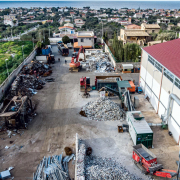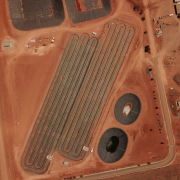ESR or ETS: Waste Treatments Should Be in the Same Basket
Keeping the waste management chain united is essential to prevent legal and illegal landfills and keep up with the EU efforts towards decarbonisation.
In July 2021, with the publication of the first batch of the “Fit for 55” climate package, the European Commission disclosed the proposal to review the Emissions Trading System (EU ETS). The Waste-to-Energy sector was not included in the proposal. It is already covered by the Effort Sharing Regulation (ESR) with the other waste treatments options: landfills and recycling.
Nevertheless, the request to include solely Waste-to-Energy in the ETS remained. The proponents assume that making Waste-to-Energy more expensive will push towards waste prevention and recycling. In ESWET’s view, this idea is unrealistic and simplistic.
In fact, ESWET believes that such a decision would cause severe side-effects for the waste management chain: higher cost of recycling, additional fees for municipalities and a rise in non-recyclable waste sent to legal and illegal landfills.
“Any potential benefits from the inclusion of Waste-to-Energy in the EU ETS would be in vain, if the waste management chain were to be disrupted”. Commented Charoula Melliou, ESWET Policy Officer for Decarbonisation, “That’s why we call for the same legal instrument to cover the whole waste sector”.
Today, ESWET is open to discuss how the sector can further contribute to the EU decarbonisation efforts, irrespective of where these requirements stem from – be it the Effort Sharing Regulation or the EU Emissions Trading System Directive or any other legislative instrument – provided that the following concrete prerequisites are met in any scenario:
- Avoid splitting the waste management sector by putting solely municipal Waste-to-Energy under a different instrument while keeping the other sectors under another without any prior impact assessment;
- On the contrary, keeping the entire waste management sector under the same legislative mechanism will ensure that there is no promotion of landfills and their associated methane emissions, which are not adequately regulated today, unlike CO2 and other Greenhouse Gases (GHGs);
- Any legislative instrument pursuing the reduction of GHG emissions should respect the polluter-pays principle (PPP), so it should be designed in a way that it is not applied too far from the source of fossil CO2;
- Support is needed for carbon capture utilisation and storage (CCUS) implementation in Waste-to-Energy plants to reduce GHG emissions from non-recyclable waste further;
- EU legislation on decarbonisation should consider the offsets of CO2 emissions in WtE, not just the direct emissions.
It is important to highlight that Waste-to-Energy (WtE) plants are recognised today as a key factor in pollution prevention. They sustainably and efficiently treat non-recyclable waste, including microplastics, thus diverting this waste from landfills, consequently preventing methane emissions and long-term risks of groundwater, soil, and air pollution.
The next step to further reduce GHG emissions from non-recyclable waste is to support carbon capture and storage (CCS) implementation in Waste-to-Energy plants. The sector can become carbon neutral or even carbon negative, as demonstrated by several pilot projects in Europe.
The position paper: “ESWET position on the proposed revision of the EU Emissions Trading System (EU ETS) Directive and the Effort Sharing Regulation (ESR) “is available here: https://eswet.eu/wp-content/uploads/2022/01/ESWET_ETS-and-ESD_2022.pdf
Source: ESWET (Brussels, January 12, 2022)







